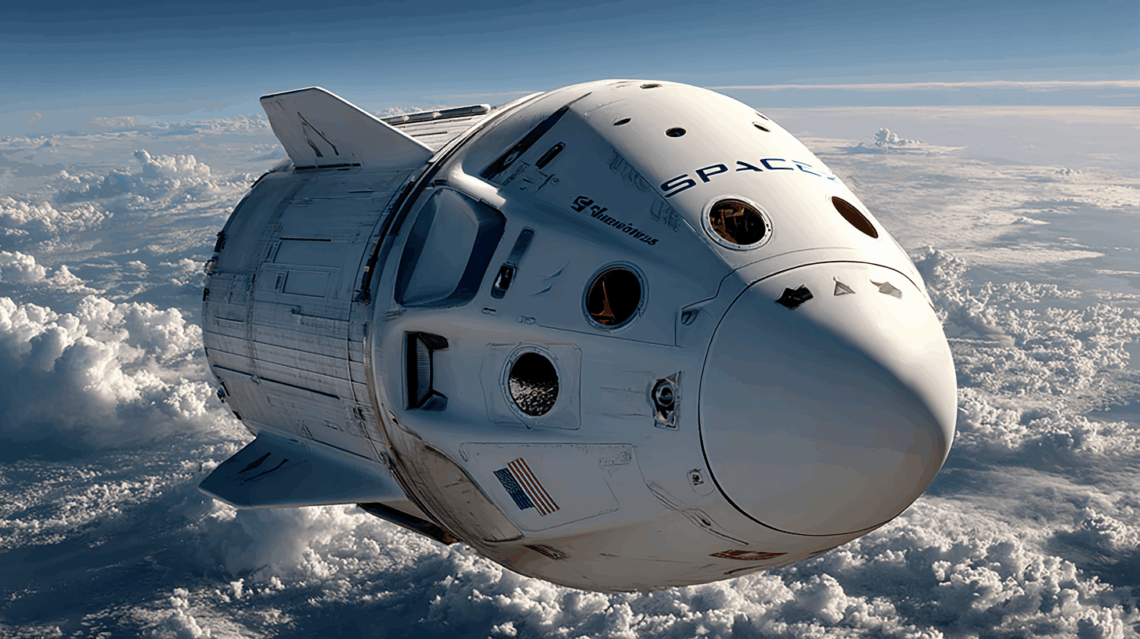Spaceflight Technologies: How Humans Are Getting to Space Today
Modern space tourism is only possible thanks to incredible advancements in spaceflight technologies. Whether you’re rocketing past the Kármán line with Blue Origin or gently rising to near-space altitudes in a pressurized balloon with World View, each experience depends on unique vehicles, propulsion systems, and safety mechanisms.
This page introduces you to the core technologies used across the commercial spaceflight industry. From reusable suborbital rockets to futuristic spaceplanes, you’ll get a full breakdown of how private companies are putting tourists, researchers, and payloads into space (or near it).
Types of Spaceflight Technologies in Use Today
Reusable Rockets
Reusable rockets are one of the most groundbreaking advances in commercial spaceflight. Rather than discarding expensive rocket stages after a single use, companies like SpaceX and Blue Origin land and reuse key components—sometimes within days.
- Companies: SpaceX, Blue Origin
- Purpose: Orbital and suborbital flights
- Key Advantage: Lower cost per launch, higher frequency
Suborbital Space Vehicles
Suborbital vehicles reach space but don’t complete an orbit. They allow passengers to experience weightlessness and see the curvature of the Earth, then return home in under an hour.
- Companies: Virgin Galactic, Blue Origin
- Purpose: Brief spaceflight experiences above 100km
- Technology: Air-launched spaceplanes or vertical rockets
Stratospheric Balloons
These high-tech balloons offer a peaceful, hours-long ascent to the edge of space, where passengers enjoy stunning views without high-G forces or rocket engines.
- Companies: World View, Space Perspective
- Altitude: ~100,000 ft (30km)
- Purpose: Near-space tourism, climate research
Parabolic Flight Aircraft
Though not “spaceflights,” parabolic aircraft provide an essential training ground for astronauts and a fun zero-G experience for civilians.
- Companies: Zero-G, Novespace
- Purpose: Simulate zero gravity
- Technology: Special aircraft fly in arc patterns to create short bursts of microgravity
Spaceplanes
Spaceplanes blend aircraft and spacecraft features, offering a scalable way to fly to orbit and land conventionally.
- In Development By: Sierra Space (Dream Chaser), Virgin Galactic (VSS Unity)
- Goal: Reusable craft capable of runway takeoff/landing and reaching space
- Status: Early testing, limited commercial deployment
Side-by-Side Comparison of Spaceflight Technologies
| Technology | Example Company | Altitude Range | Duration | Gravity Experience | Vehicle Type | Reusability |
|---|---|---|---|---|---|---|
| Reusable Rocket | SpaceX | 300km+ (orbital) | Days to weeks | Continuous microgravity | Falcon 9 / Starship | Yes |
| Suborbital Rocket | Blue Origin | ~100km | 10–12 minutes | 3–5 mins zero-G | Vertical launch capsule | Yes |
| Air-Launched Spaceplane | Virgin Galactic | ~85–90km | ~90 minutes | 4–5 mins zero-G | Mothership + spaceplane | Yes |
| Stratospheric Balloon | World View | ~30km | 6–8 hours | Normal gravity | Pressurized capsule | Yes |
| Parabolic Aircraft | Zero-G Corporation | ~10km | ~90 minutes | 20–30 x 20s bursts | Modified jet | Yes |
Which Spaceflight Technology Is Best?
It depends on your goals.
If you want to float weightless, try Zero-G flights or a suborbital rocket.
If you want a gentle, luxurious ride, choose a stratospheric balloon.
If you’re interested in longer-duration orbital adventures, keep an eye on Axiom Space and SpaceX.
If you’re environmentally conscious, spaceplanes and balloons offer lower-impact options.
Environmental Impact of Spaceflight Methods
| Technology | Fuel Type | Carbon Emissions | Environmental Notes |
|---|---|---|---|
| Reusable Rockets | RP-1/LOX or Methane | High (per flight) | Reusability offsets frequency |
| Suborbital Rockets | Liquid fuels | Moderate | Few launches so far |
| Stratospheric Balloons | Helium/Hydrogen (non-burned) | Low | Minimal emissions |
| Spaceplanes | Hybrid Rocket + Jet | Moderate to High | Reusability helps |
| Parabolic Aircraft | Jet fuel | Moderate | Comparable to normal jet use |
Balloon-based flights are by far the least carbon-intensive, especially because no fuel is burned to ascend.
Safety Technology and Redundancy
Modern spaceflight isn’t just about reaching space—it’s about doing it safely. Key safety tech includes:
-
Automated abort systems (e.g. Blue Origin’s New Shepard)
-
Parachute-assisted landings (Virgin Galactic, SpaceX Dragon)
-
Redundant navigation and control systems
-
Thermal protection for re-entry vehicles
-
Pressurized cabins with emergency protocols
These safety protocols are why the FAA certifies most commercial spaceflight providers before they carry humans.
How These Technologies Are Evolving
The race is just beginning.
- SpaceX’s Starship will revolutionize orbital transport with massive capacity and lower cost per seat.
- Axiom Space is building the first commercial space station, requiring new docking and life-support tech.
- World View and Space Perspective aim to make space tourism more sustainable, comfortable, and inclusive.
- Hypersonic aircraft may soon shorten Earth-to-Earth travel times using suborbital arcs.
- New players like Stoke Space and Relativity Space are building 3D-printed rockets and reusable launch systems.
Educational Uses of Spaceflight Technology
Commercial spaceflight technology also supports education and research. Zero-gravity flights are used by NASA, ESA, and universities for training and scientific research.
Balloon flights offer platforms for atmospheric studies, telescope deployment, and high-altitude photography.
Programs using these technologies help inspire and educate the next generation of space explorers.
Explore Each Technology in Detail
Want to dive deeper into each of these methods? Start here:
What the Future Holds for Spaceflight Technologies
As demand for space tourism grows, so does investment in more efficient, more affordable, and more sustainable spaceflight technologies.
In the next decade, expect:
-
Space stations built by private companies
-
Rapid reuse of rockets within 24 hours
-
Spaceports in multiple countries
-
Point-to-point Earth travel via space
-
Next-gen propulsion systems (nuclear, plasma-based)
These developments aren’t just science fiction—they’re part of the long-term roadmap being built right now.
Conclusion
Understanding spaceflight technologies helps you appreciate the real engineering marvels behind each space tourism option. Whether you’re planning a balloon journey to the stratosphere or eyeing a future trip to orbit, the underlying tech determines the experience, cost, and safety of your mission.
